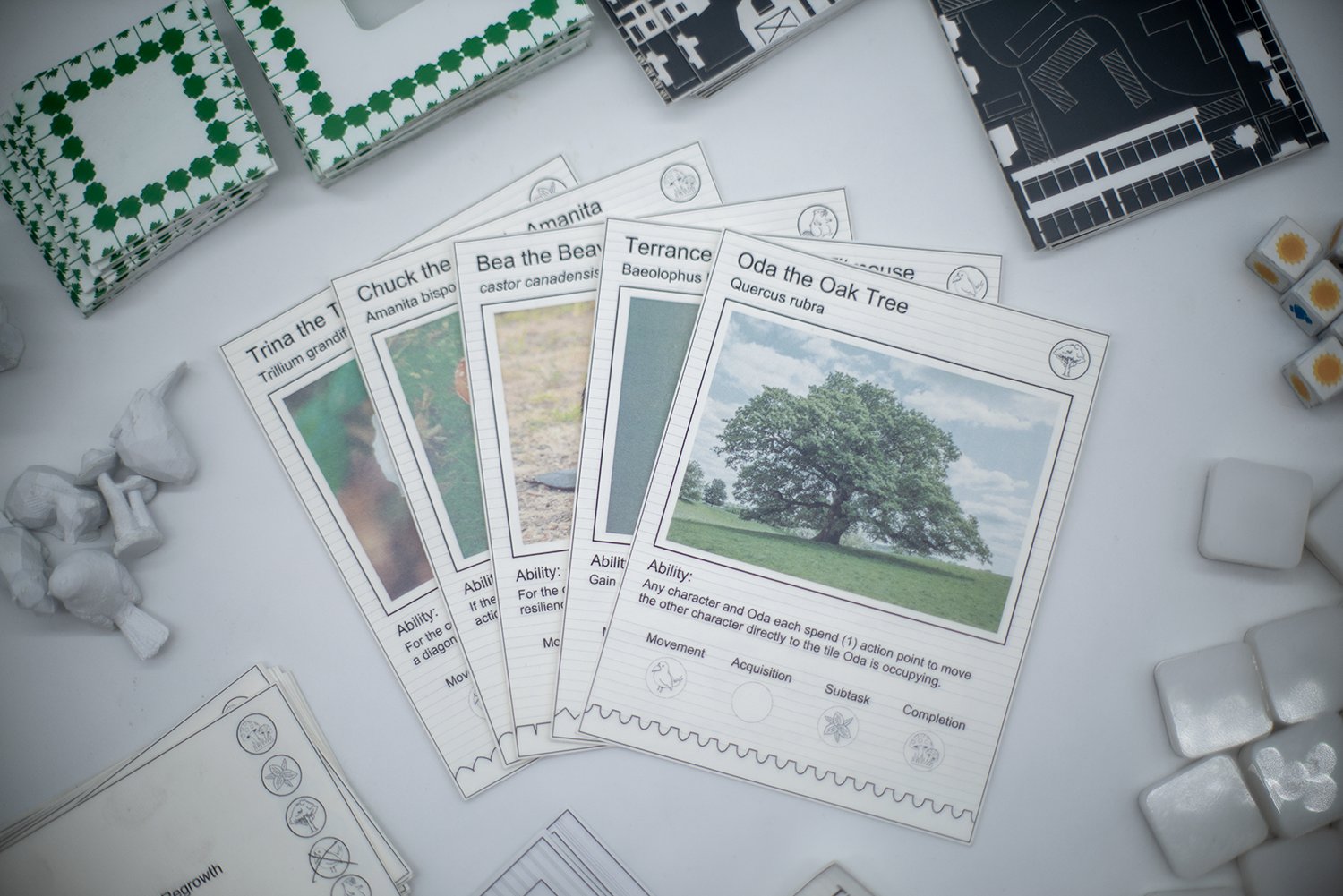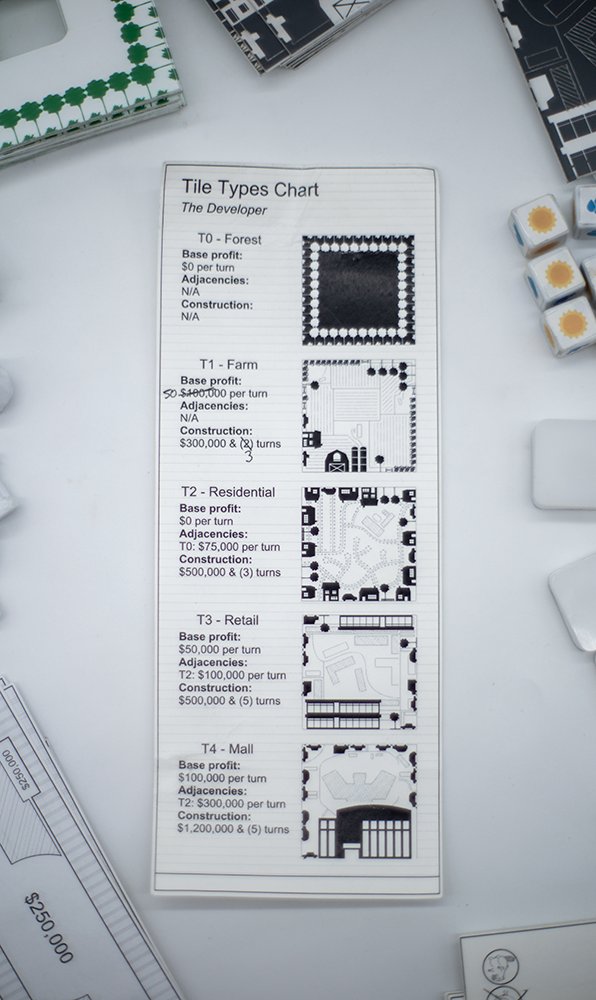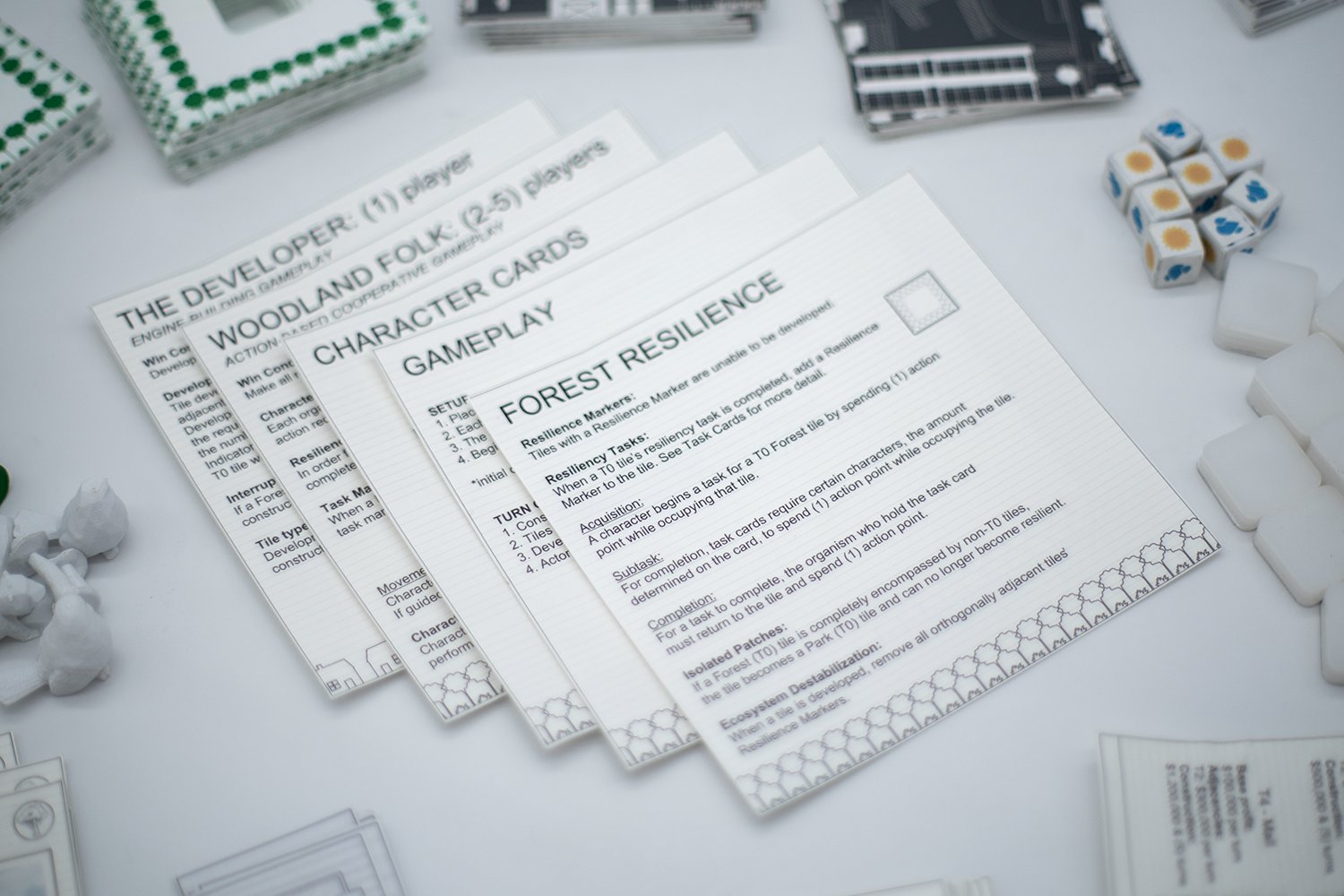Sprawl & Resilience (Undergraduate Thesis, 2022)
“News of a human developer surveying the area has shaken the woodland creatures and native plant life. The forest has destabilized and there is chaos among its residents. Can the Woodland Creatures work together in order to combat the impending development?”

This thesis chose to focus on the issues regarding the devaluation of the natural world. Suburban development continues to expand outwards, covering forests, fields, and other habitats with single-family homes and asphalt. In light of the ever-increasing issues of climate change and biodiversity loss, suburban development and its lifestyle are becoming increasingly negative.
The protagonists of the game are the Woodland Creatures of the natural world. In light of their habitat destruction, they must face evil and work together in order to come out alive. The thesis's villain is the Developer: a wealthy individual in the suburbs that represents and embodies the issues of suburbia. The Developer and the Woodland Creatures struggle for territory on the board, and power dynamics and imbalances between the two parties arise.

The mechanics of the game give far more power to the Developer than to the Woodland Creatures. It is intended that as players sit around a table together, a social dynamic arises where the few (the Developer) have the majority of the power in changing the board state and the many (the Woodland Creatures) must rapidly adapt their actions to combat impending decisions and strategies.

The actions and relationships between players constructs a tension between the Developer and the Woodland Residents. The constructed dynamic that arises from one player with lots of power vs many with not small amounts becomes contradictory to the physical presence the players have when seated when around the table. This designed experience highlights the inequalities that arise from classes, power struggles, and erasure. The Woodland Creatures are influenced to share common resources to combat the imbalances they face from the other side of the board.
 |  |
 |  |

 |  |

 |  |  |
 |  |  |
The thesis and board game were fortunate enough to be exhibited in the 2022 Carnegie Mellon University School of Architecture Symposium, where many took part in playing.
- 2025
- Primitive Slicer
- 2024
- Semantic Floor Plans
- ITECH Research Pavilion
- Wax Flamingos
- Phenomena Modeling
- 2023
- Honeycomb
- Water-QWOP
- Horse & Chariot
- Hyper-hydration
- 2022
- Sprawl & Resilience
- 2021
- Cybernetic Field
- Bubble-GAN
- 2020
- ELC: Carrick
- 15-112: placeHolder
- Collaborative Winding
- 2019
- Flood Museum
- Design Fabrication
- Spring Garden Hostel
- Modular Garden
- Bathhouse
- 2018
- Hoophouse
- Drawings